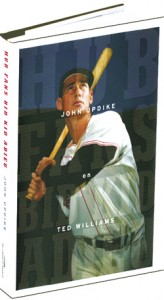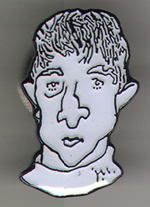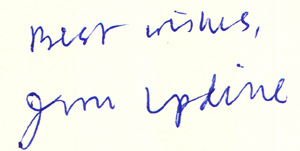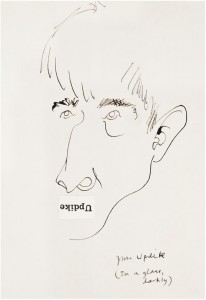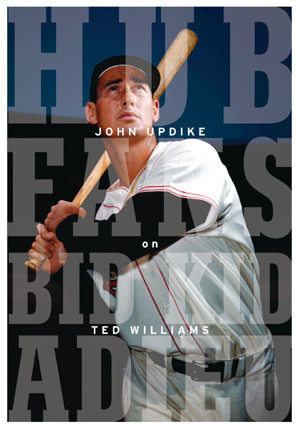 In May 2010, The Library of America will celebrate the 50th anniversary of Ted Williams’ memorable last at-bat by publishing a special commemorative edition of John Updike’s “splendid essay,” “Hub Fans Bid Kid Adieu.”
In May 2010, The Library of America will celebrate the 50th anniversary of Ted Williams’ memorable last at-bat by publishing a special commemorative edition of John Updike’s “splendid essay,” “Hub Fans Bid Kid Adieu.”
According to Christopher Carduff, consulting editor for The Library of America, the text was in-progress before Updike assembled Endpoint and was finished on January 15, 2009, two weeks before his death. “Its centerpiece is the version of ‘Hub Fans’ that Updike published in Assorted Prose (1965), with a few slight textual revisions,” Carduff said. “To this Updike added a short ‘auto-bibliographical’ preface written specially for the book and, as a kind of afterword, a conflation and rewrite of his other Ted Williams essays, the late-life sketch from Sport magazine (1986) and the obituary tribute from The New York Times Magazine (2002).”
The book, a special publication of The Library of America, will be priced at $15 U.S. ($18.50 Canadian). The trim size is 5 1/4 x 7 1/2″, and it’s 64 pages long, with frontispiece and illustrated endpapers. Library of America publicity calls it “the classic, final version of the essay,” of which Roger Angell raved, “The most celebrated baseball essay ever,” and Garrison Keillor wrote, “No sportswriter ever wrote anything better.” Even Ted Williams is blurbed: “It has the mystique,” he’s quoted as saying.
As a Viking Press catalog entry describes (and Viking distributes Library of America titles), “On September 28, 1960—a day that will forever live on in the hearts of baseball fans everywhere—Red Sox slugger Ted Williams stepped up to the late for his final at-bat at Fenway Park. Rising to the occasion, he belted a solo home run, a storybook ending to a storied career. In the stands that afternoon was twenty-eight-year-old John Updike, inspired by the historic moment to write what would be his lone venture into the field of sports reporting. more than a mere account of that fabled final game, Hub Fans Bid Kid Adieu is a meditation on how Williams’s relentless pursuit of greatness raised excellence in sport to something akin to grace.”
Planned publicity includes national advertising, a special Father’s Day promotion, and events in Boston and nationwide. The dust jacket, Updike aficionados may recognize, is designed by Updike’s longtime Knopf collaborator Chip Kidd. Hub Fans Bid Kid Adieu will be available directly from the Library of America or through the usual sources, including Amazon.com.

